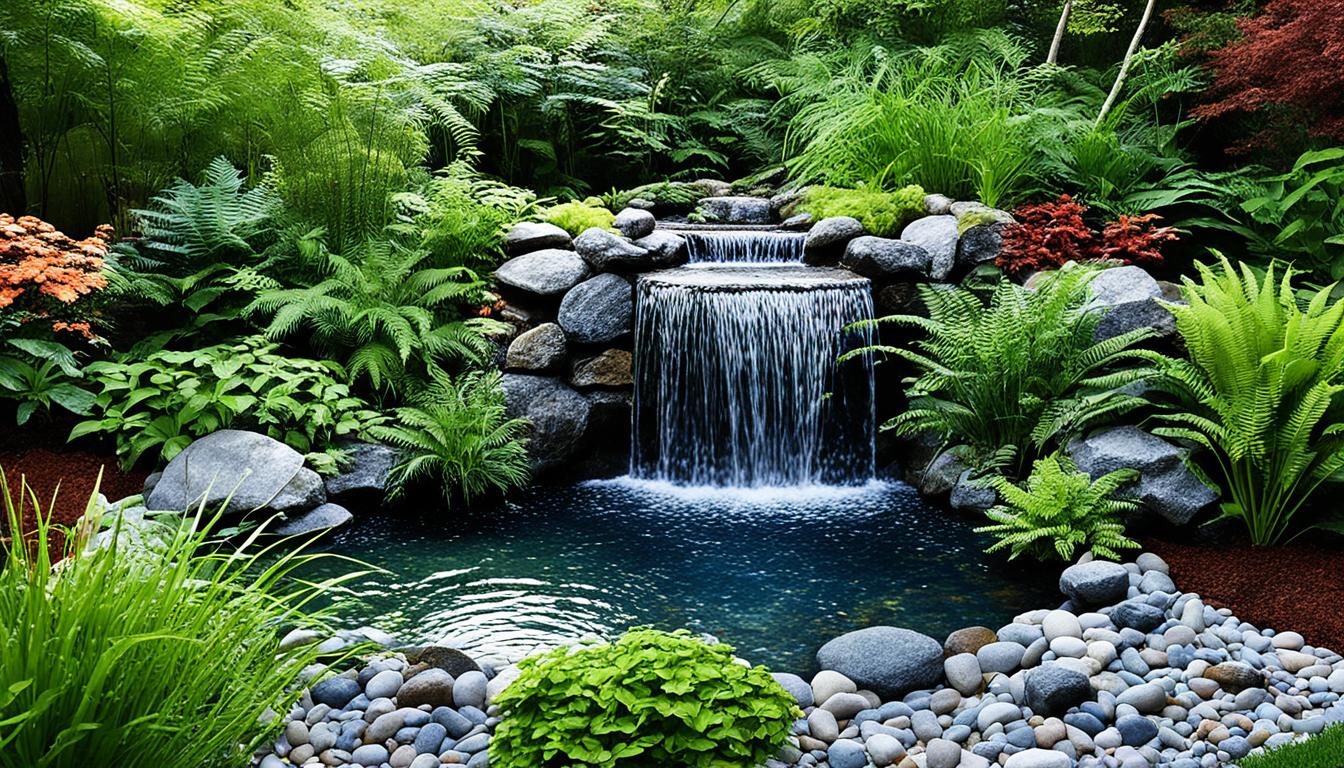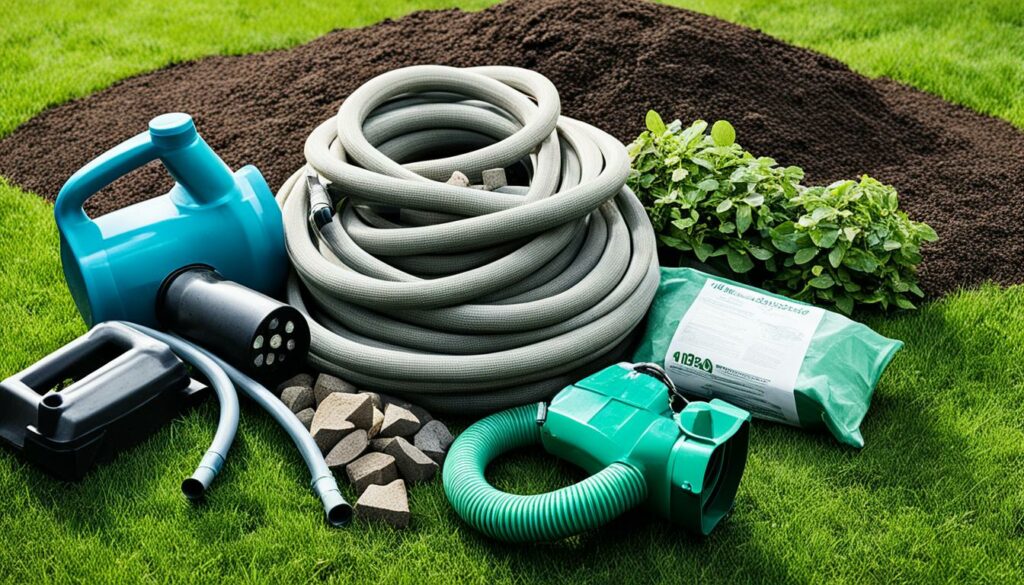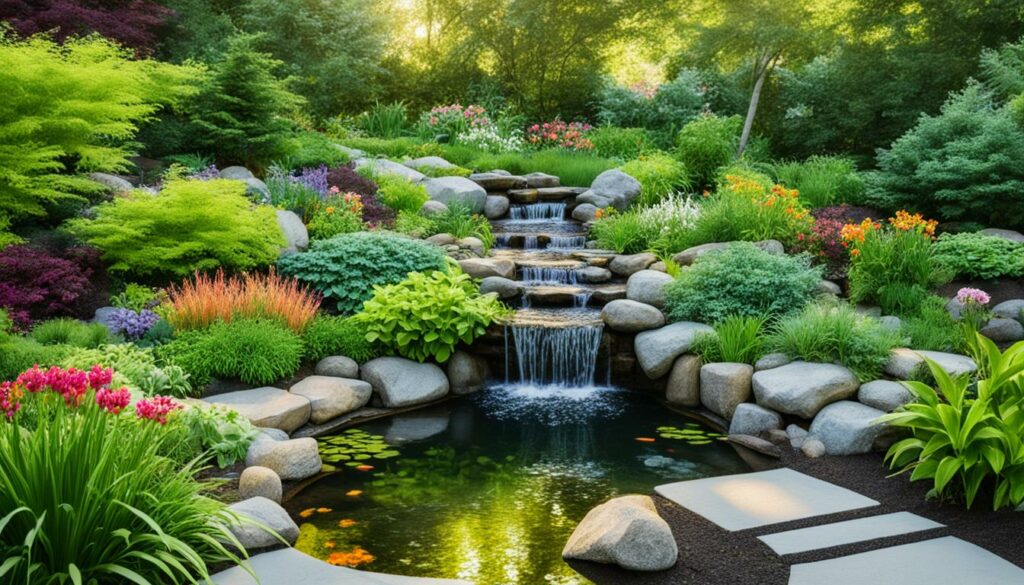
The allure of DIY waterfall projects for your garden lies in their ability to transform a yard into a tranquil retreat and significantly boost a home’s value. DIY garden waterfalls provide a reprieve from stress, with the peaceful sounds of falling water promoting relaxation. These projects can be accomplished by couples or families, turning them into fun, bonding experiences. With numerous online tutorials from reliable sources such as DIY Network, HGTV, and The Summery Umbrella, homeowners can take on waterfall projects at a fraction of the cost of professional installations. For instance, The Summery Umbrella demonstrated a waterfall project that cost roughly $300, proving that with the right guidance, materials like concrete, and repurposed items, creating an affordable yet breathtaking water feature is within reach.
Benefits of Adding a Garden Waterfall
Adding a garden waterfall to your outdoor space comes with a multitude of benefits that can greatly enhance your garden’s ambiance and functionality. From reducing stress to blocking out unwanted noise, a well-designed waterfall can transform your backyard into a tranquil retreat.
Stress Reduction
The sound of water cascading down a waterfall is a powerful tool for reducing stress. Stress-relieving garden waterfalls create a serene environment, promoting relaxation and a sense of calm. The soothing sounds of flowing water can help alleviate anxiety and provide a peaceful sanctuary in your own backyard.
Noise Reduction
Garden waterfalls can also serve as effective noise blockers. Noise-blocking backyard waterfalls are particularly useful in urban settings where traffic and neighborhood noise can be disruptive. The continuous sound of water helps to mask these disturbances, creating a more peaceful outdoor space.
Attracts Wildlife
Another significant benefit of garden waterfalls is their ability to attract wildlife. Wildlife-friendly water features invite birds, butterflies, and beneficial insects to your garden, fostering a vibrant and dynamic ecosystem. This not only enhances the biodiversity of your garden but also provides an opportunity to enjoy watching wildlife in its natural habitat.
Enhances Aesthetic Appeal
A garden waterfall can be a striking visual element in your landscape design. Aesthetically pleasing landscape waterfalls add a touch of elegance and sophistication to your garden. Whether modern or naturalistic in design, these water features can elevate the overall aesthetic of your outdoor space and increase property value.
Essential Materials and Tools for DIY Waterfall Projects
Undertaking a DIY waterfall project begins with gathering the essential materials and tools to ensure a smooth construction process. By carefully selecting DIY waterfall construction materials and appropriate tools for building waterfalls, you can create a beautiful and functional water feature that enhances your landscape.
Materials
First, let’s discuss the key materials you will need. A well-prepared checklist of DIY landscape waterfalls materials is crucial for a successful project. Include the following items in your materials list:
- Pressure-treated lumber (2x4s, 2x6s)
- PVC pipes and fittings
- Reliable submersible pump
- Concrete mix and liquid cement color for custom rocks
- Waterproof liner
- Landscape fabric
- Gravel and decorative stones
For more detailed guidance on selecting these materials, you can refer to resources like this article.

Tools
Equipping yourself with the right tools is just as important. Here’s a list of essential tools for building waterfalls:
- Drills and screw guns
- Levels and measuring tape
- Handsaws or circular saws
- Shovels and wheelbarrows
- Hammers and other basic carpentry tools
- Safety gear like gloves and goggles
These tools will ensure precise construction and make the installation process more efficient. For an in-depth guide and comprehensive materials checklist, there are numerous online resources special tailored for DIY enthusiasts.
How to Choose the Perfect Location for Your Waterfall
Choosing a waterfall location in your garden is crucial for both aesthetic appeal and functionality. It involves evaluating the surroundings to ensure your water feature complements the natural beauty of your outdoor space while also being practical for maintenance and viewing pleasure.
Consider the Landscape
When selecting the perfect spot for garden waterfall placement, take into account the existing landscape elements. A natural slope can beautifully lend itself to creating a cascading effect, making the waterfall a focal point of your garden. Additionally, consider where you have trees, rocks, and plants to seamlessly integrate the waterfall into your existing environment.
Accessibility to Water Source
Optimal waterfall positioning requires easy accessibility to a water source. Whether you have a pre-existing pond or plan on creating one, ensure it is close enough to your chosen location to make the water flow practically feasible. Being near a water source will also facilitate easier maintenance and reduce the need for extensive plumbing work.
Sunlight and Shade Balance
Balancing sunlight and shade is essential when choosing a waterfall location in your garden. Too much sunlight can increase algae growth, requiring more frequent cleaning, while too much shade may obscure your beautiful feature. An area that receives dappled sunlight throughout the day is ideal for maintaining a healthy, appealing waterfall environment.
Step-by-Step Guide to Building a Small DIY Waterfall
Creating a tranquil garden oasis can be achieved by following this detailed DIY waterfall guide. Here’s how to approach the project from start to finish.
Step 1: Prepare the Area
Start by clearing vegetation and leveling the ground where your waterfall will be installed. This step ensures a solid foundation and easy access for assembling a garden waterfall. Proper preparation is crucial for the stability and longevity of your project.
Step 2: Create the Framework
Build a sturdy framework using pressure-treated lumber. This framework acts as the skeleton of your DIY waterfall, providing a solid base for the structure. Ensure it’s stable and level to support the weight of the materials.
Step 3: Assemble the Waterfall Components
Begin assembling the waterfall components such as faux rocks and PVC piping for water distribution. This step is critical for crafting the desired flow and look of your waterfall.

Step 4: Integrate the Water Feature
Integrate the water feature by setting up the pump and securing the water lines. Proper integration will ensure smooth water circulation and an uninterrupted water flow, essential for maintaining a functional DIY waterfall.
Step 5: Add Decorative Elements
Add the finishing touches by incorporating natural stones, plants, and possibly lighting. These elements enhance the aesthetic appeal, turning your project into a serene and visually appealing focal point in any garden.
By following this step-by-step DIY waterfalls guide, you will successfully create a calming and beautiful feature in your garden. Remember that regular maintenance as emphasized in this DIY waterfall guide is key to sustaining its beauty and functionality over time.
Budget-Friendly DIY Waterfall Ideas
Creating a beautiful garden waterfall doesn’t have to drain your finances. With some creativity and resourcefulness, you can achieve a stunning water feature without breaking the bank. Here are several budget-friendly tips to help you get started on your affordable DIY waterfall projects.
Using Found Rocks
One of the most cost-effective ways to construct a garden waterfall is by utilizing found rocks. Collecting rocks from local farms or natural areas can save significant money on materials. Plus, the natural variation of the stones adds a unique, rustic charm to your budget waterfall construction.
Repurposing Old Items
Give new life to old items by incorporating them into your waterfall design. Old pots, containers, and even broken pieces of furniture can serve as excellent components for your cost-effective garden waterfalls. This approach not only saves money but also adds a unique touch to your garden aesthetic.
Choosing Affordable Pumps
Selecting the right pump is crucial for your waterfall’s functionality. Opt for an affordable yet efficient submersible pump to keep your project within budget limits. Many brands offer reliable and cost-effective garden waterfalls solutions that ensure you don’t compromise on performance while maintaining financial constraints.
Maintenance Tips for Your DIY Garden Waterfall
Ensuring the longevity and beauty of your water feature involves regular upkeep and proper care. Here are key maintenance tips for maintaining a garden waterfall:
Regular Cleaning
For effective DIY waterfall upkeep, it’s crucial to routinely remove debris like fallen leaves and twigs that can accumulate in your garden waterfall. Regular cleaning prevents blockages and reduces the risk of algae growth. Make it a habit to check your feature at least once a week to maintain its pristine condition.
Water Quality Management
Maintaining water clarity is essential for a healthy and appealing garden waterfall. Use water treatments or beneficial bacteria to keep the water clear and free from harmful organisms. Monitoring pH levels and other water parameters is part of consistent garden waterfall care, ensuring the water remains balanced and safe for any wildlife it attracts.
Pump Maintenance
The pump is the heart of your waterfall, requiring regular attention to guarantee smooth operation. Every month, inspect the pump for clogs or damage and clean it as necessary. This practice is a critical component of maintaining a garden waterfall efficiently, as a well-functioning pump ensures steady water flow and prevents system failures.
Winterizing Your Waterfall
Preparing your garden waterfall for winter is essential to avoid damage from freezing temperatures. Begin by removing the pump and storing it safely indoors. This process of winterizing your waterfall helps protect it from the cold, ensuring it is ready to be reassembled and enjoyed once warmer weather returns. Thoroughly drain the water feature and cover it to prevent debris accumulation over the winter months.
Conclusion
Embarking on a DIY waterfall project can significantly enhance your garden, transforming it into a serene oasis. The benefits of garden waterfalls extend beyond mere aesthetics, offering tangible stress relief, noise reduction, and an inviting habitat for local wildlife.
Successful DIY waterfall projects completion hinges on thoughtful planning and resourcefulness. By selecting budget-friendly materials like found rocks and repurposing old items, along with choosing affordable pumps, anyone can craft a stunning waterfall feature without breaking the bank. Furthermore, the myriad of available tutorials makes it accessible even for beginners to achieve a professional look.
Regular maintenance ensures the continued beauty and functionality of your water feature. Keeping the water clean, managing its quality, and maintaining the pump are crucial steps. For those in colder climates, winterizing your waterfall protects it from potential damage. This regular upkeep guarantees your garden waterfall remains a treasured sanctuary for years to come.
Ultimately, the benefits of garden waterfalls are manifold, providing visual appeal and creating a peaceful, restorative environment in your backyard. With diligent planning and consistent care, your DIY waterfall project completion will yield a stunning feature that enhances your outdoor living space.








